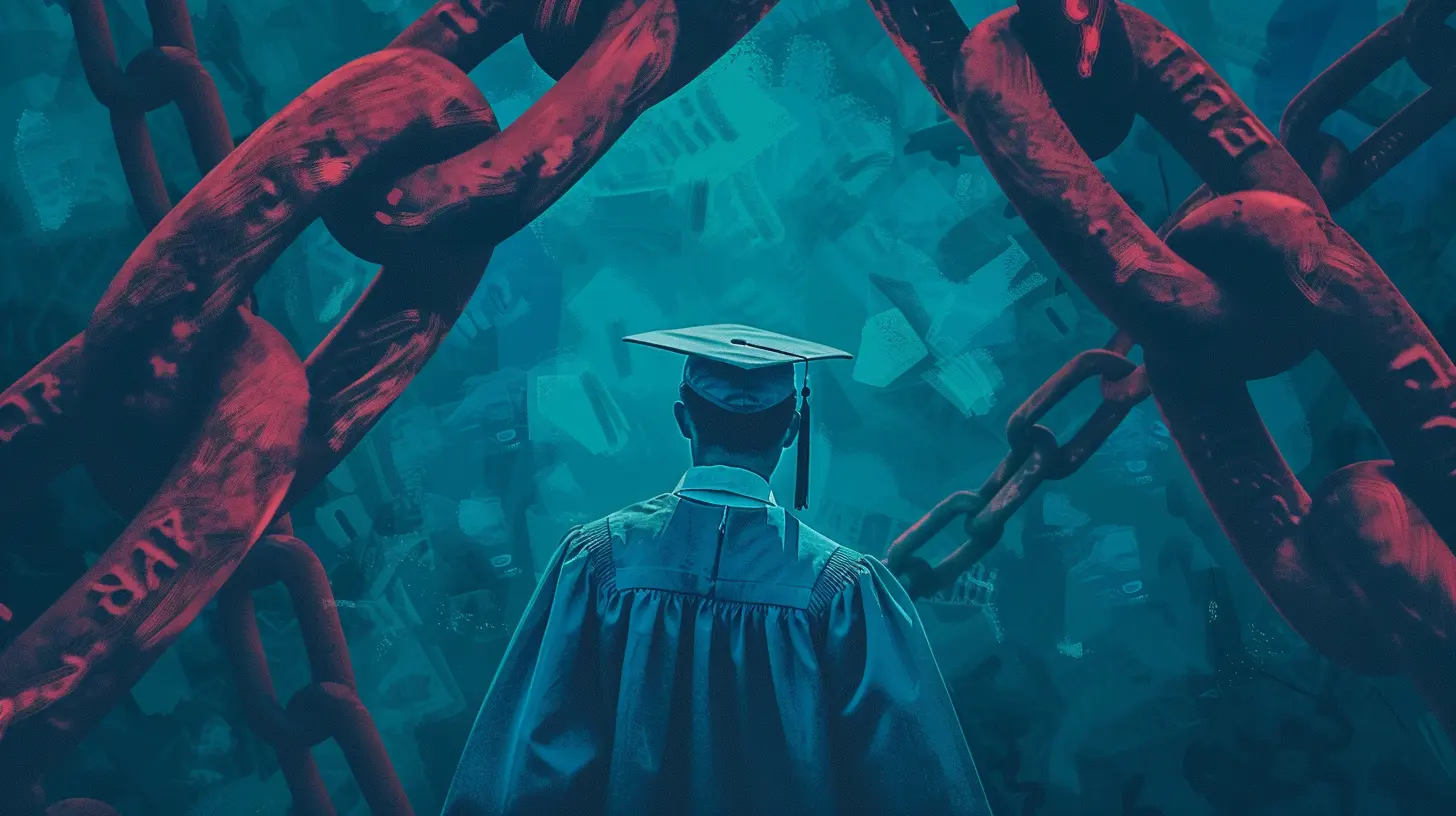How to Avoid Falling Into the Student Loan Debt Trap
9 September 2025
Let’s be real—college is crazy expensive. You’ve probably heard horror stories about people in their 30s and 40s still paying off student loans. Yikes, right? The student loan debt trap is real, and it can suck you in before you even realize what’s happening.
But here’s the good news: you don’t have to fall into that trap. With a little planning, a sprinkle of strategy, and some common sense (which isn’t always so common in the world of student debt), you can absolutely avoid the dreaded weight of overwhelming student loans dragging you down for decades.
This guide is your personal blueprint to breaking free from the cycle before it starts. If you’re a high school student thinking about college, a parent trying to help out, or even someone considering going back to school—this is for you.

Understanding the Student Loan Debt Trap
Before we talk about how to dodge it, let’s break down what the trap really is.The “student loan debt trap” refers to the situation where people borrow more money for college than they can realistically pay back. It’s not just the amount of the loan—it’s about high interest rates, slow repayment, missed payments, and debt that follows you around like a bad tattoo.
You start school thinking you’ll manage it. But four years and tens of thousands of dollars later? Boom. Reality check hits harder than finals week.

1. Start With the End in Mind: What's the ROI?
ROI, or return on investment, isn’t just for Wall Street bros. It matters big time when it comes to college.Ask yourself: _“Will the career I want justify the cost of the degree?”_ It sounds simple, but a shocking number of people don’t think this through.
If you’re taking out $100,000 in loans to get a degree that typically leads to a $35,000/year job, you’re setting yourself up for a long-term financial struggle. That’s like buying a luxury car on a fast-food salary. It just doesn’t add up.
❗Pro Tip: Check the average starting salaries for your intended field. Use tools like the U.S. Bureau of Labor Statistics or Glassdoor.

2. Choose Your School Wisely
You don’t have to go Ivy League to succeed—and you definitely don’t have to pay Ivy League prices.Community college for the first two years? Brilliant. In-state public university? Super smart. Some private colleges offer great financial aid, but others… not so much.
It’s easy to get starry-eyed about prestigious schools. But remember, future employers care way more about your skills than your school’s name—especially if you’re drowning in debt after graduation.
🏫 Real Talk: A degree is what you make of it. Go where you can get the best education for the lowest cost.

3. Max Out Free Money Options First
This should be your mantra: _“Free money before borrowed money.”_Before you even think of loans, exhaust every opportunity for:
- Scholarships
- Grants
- Work-study programs
Financial aid isn’t just for “straight-A students” or “perfectly poor” families. There are scholarships for everything—left-handed people, kids of veterans, aspiring duck-callers (not joking, Google it).
Apply for as many as you can. Even $500 here and there adds up. And the best part? You don’t have to pay it back.
4. Understand the Types of Student Loans
Okay, if you absolutely have to take out loans (and for many people, that's the case), it’s crucial to know what you’re signing up for.Here’s a quick breakdown:
- Federal Loans – Offered by the government. Generally lower interest rates. Easier repayment options. More forgiving.
- Subsidized Loans – The government pays the interest while you’re in school.
- Unsubsidized Loans – Interest starts growing from day one.
- Private Loans – From banks or private lenders. Usually higher interest. Fewer protections. Riskier.
🚫 Avoid private loans unless you’ve exhausted every federal option. Read the fine print. The interest rates can be nasty.
5. Borrow Only What You Need (Not What You’re Offered)
Here’s where a lot of students slip up.Let’s say your school offers you a $15,000 loan package, but you only actually need $8,000. Don’t take the full amount just because it’s there.
Remember: every dollar you borrow today is a few dollars you’re paying back tomorrow—with interest.
💡 Think of student loans like credit cards with a 10-30 year grace period. It’s easy to swipe now, but hard to pay off later.
6. Work During School (Yes, It’s Possible)
I get it—balancing work and school is tough. But you don’t need to work 40 hours a week to make a dent in your expenses.Even a part-time gig can help cover books, food, and rent. Every dollar you earn is a dollar you’re not borrowing. It’s not glamorous, but it’s smart.
Plus, working during college helps you build real-world skills and experience. That means you’ll hit the ground running after graduation.
🤑 Side Hustle Ideas:
- Tutoring
- Freelancing online
- Babysitting
- Campus jobs
- Delivery gigs
7. Live Like a Broke Student (Because You Are One)
This one’s tough, but important.College is not the time to live large. It’s time to embrace ramen noodles, hand-me-down furniture, shared Netflix accounts, and roommate-living.
The less you spend, the less you have to borrow. It’s that simple.
You don’t want to be the person who’s still paying for their college spring break trip 10 years later.
🏠 Budget tips:
- Split rent with roommates
- Cook at home
- Use student discounts
- Buy used textbooks or rent them
8. Consider Alternatives to the Traditional 4-Year Path
Not everyone needs a four-year degree. Seriously.Trades like plumbing, HVAC, welding, and electric work are in high demand and pay really well. Plus, trade school is usually a fraction of the cost of college—and way shorter.
Don’t buy into the myth that a traditional college path is the only road to success. It’s not. The goal is financial independence, not just a fancy diploma on the wall.
9. Think Twice About Graduate School
Let’s say you finish undergrad and are tempted to jump straight into grad school. Take a breath.Unless your future career absolutely requires a graduate degree (hello, lawyers and doctors), think twice before taking on even more debt.
Sometimes, real-world experience can be more valuable than another round of student loans.
📚 Ask yourself:
- Does this degree increase my earning potential significantly?
- Can I work while studying?
- Is my employer willing to help cover the cost?
10. Have a Repayment Strategy Before You Graduate
Yes, even before you’ve thrown your cap in the air, you need a plan.Know your loan balance. Learn your interest rates. Figure out your monthly payments. Look into income-driven repayment plans and loan forgiveness programs.
The earlier you start planning, the less scary it all becomes.
🎓 Bonus: Start paying interest while you’re still in school. Even $25/month can shave years off your loan.
11. Talk Openly About Money
This might sound weird, but start normalizing money talks. Talk to your parents, your friends, financial aid counselors—anyone who’ll listen.The more you know about your finances, the more confident you’ll be when making decisions. No shame, no judgment—just smart conversation.
You wouldn’t jump into a pool without checking the depth, right? So don’t take out loans without knowing what you’re getting into.
12. Real-Life Stories: Cautionary Tales
Let’s look at two quick stories:- Ashley took out $120,000 in loans for a private art school. She’s paying $1,200 a month and still owes the majority of her balance. She's working two jobs and can't afford to move out of her parents' house.
- Marcus went to community college for two years, transferred to a state school, worked part-time, and earned scholarships. He graduated with $5,000 in loans and paid them off within two years.
Same degree. Very different financial outcomes.
Final Thought: It's About Freedom
At the end of the day, avoiding the student loan debt trap isn’t just about being frugal—it’s about choosing freedom.Freedom to take jobs you love instead of jobs you need just to pay off debt. Freedom to buy a house or travel in your 20s. Freedom from the stress of bills piling up and interest eating away at your income.
Your future self will thank you.
So take the right steps today, be mindful of your choices, and stay out of the student loan quicksand. You’ve got this.
all images in this post were generated using AI tools
Category:
Student LoansAuthor:

Knight Barrett
Discussion
rate this article
1 comments
Penelope Schultz
Debt-free is the new sexy!
September 14, 2025 at 4:58 AM

Knight Barrett
Absolutely! Embracing a debt-free lifestyle empowers you to focus on opportunities and financial freedom.


